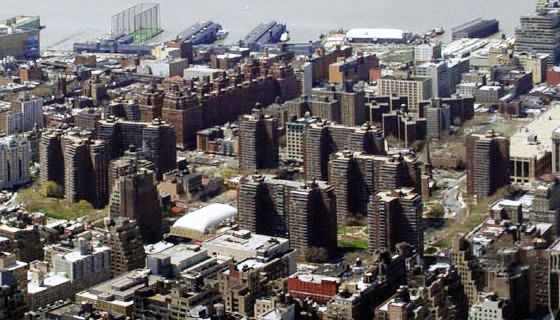This excerpt from Bloom’s book, Public Housing that Worked: New York in the Twentieth Century, speaks clearly to both the design flaws of Robert Moses’s superblock projects and to the impact it had on the surrounding neighborhood. Moses believed in clearing the slums, but what he constructed in their place was not pleasing to the eye, nor helpful to the community. His plans, and the plans of NYCHA, were narrowly focused on cost and efficiency rather than people or community.
One of the primary criticisms of public housing in the mid-twentieth century was its unimaginative and over replicated design. According to Bloom, towers were typically shaped in X’s, T’s, or Y’s, with no elaboration or articulation of wall surface. Many residents saw this as an eyesore. Even Robert Moses acknowledged that there was little deviation from the standard when overhauling slums and rising up towers for housing. However, he also acknowledged that it was not easy to produce a more pleasing variety without additional expense. In fact, these buildings were often built according to minimum standards in order lower development cost. Consequently, many apartments were given a grade C and labeled as unattractive housing for the poor. Hence, the design issues concerning public housing had an impact beyond simple aesthetics because it also alluded to the lower quality of such housing.
In addition to quality, housing projects that targeted slums also had a negative impact on the lives of original residents and the community. When the government condemns property to rebuild public housing, existing residents have no choice but to move. As a result, many black and Puerto Rican families were displaced when the process of slum clearance began. Most were crowded into already substandard tenement housing in neighboring areas, causing their living situation to worsen. In addition, when construction begins, the area is flattened (no trees, no houses, etc.) so that it could be rebuilt. Meaning, the neighborhood is abandoned for two or three years as construction takes over. When the project is finally finished, it becomes difficult to draw people back in because the area is typically deserted. Moreover, the housing plans provided very little space for the inclusion of stores. In fact, with limited space and a new rent structure, small businesses were discouraged from opening stores in newly developed areas. This resulted in less diverse businesses, more secluded residents, and a lack of community within neighborhoods. With this in mind, it is easy to see why Robert Moses and NYCHA needed to expand their perspective beyond cost and efficiency to include the nature of people.
As Robert Moses and NYCHA found out, the transformation of slums is not simply achieved by resurrecting cost efficient middle-income housing. Instead, the approach should also include diversity in appearance, provision for all income levels, and creation of social hubs to foster community. Nonetheless, Moses’s approach to public housing serves as a foundation for what New York City would become by the late twentieth century.


